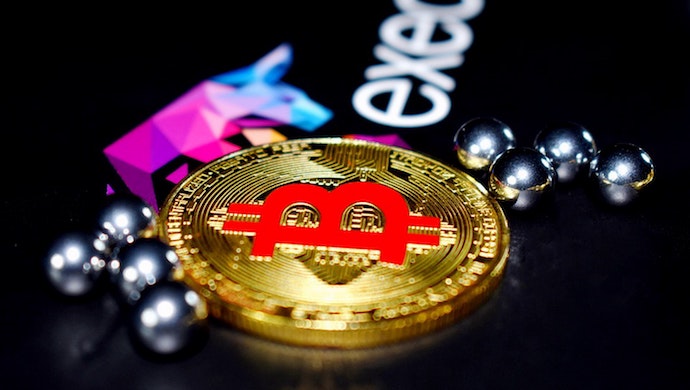Expect to see more DEXS come into play in Asia with a more critical user base, who understands the limitations that a DEX might have below the surface.
At any given moment, at least half of the top 10 ranked cryptocurrency exchanges are Asia-based exchanges. A recent report found that Asian cryptocurrency users are responsible for over 31 per cent of all cryptocurrency transacted in the past 12 months.
China alone controls 65 per cent of Bitcoin global hashrate, making China the jumping point for most new Bitcoin activity.
Asia has always been the most active and important region for the industry, as deep-rooted technology and gaming prowess create a natural fit for digital currencies. This has led to many exchanges, service providers, and ancillary companies being set up in Korea, Hong Kong, Thailand, Japan, and other top markets.
Unfortunately, a consistent stream of regulatory pressure and security incidents has caused one blow after another for Asia-based exchanges in 2020. The landscape is clearly changing as regulators feel international pressure and sophisticated hackers look to exploit security loopholes.
During this time, Decentralised Exchanges (DEXs) have exploded in popularity, with daily volume exceeding some of the largest centralised exchanges.
The implications of these changes are clear. Users want more control of their funds and are risk-tolerant enough to “gamble” their funds on decentralised finance (DeFi) yield strategies versus risking them on centralised exchanges that have control of a users’ private keys. We are witnessing a battle taking place between multiple stakeholders.
String of unfortunate events for Asian exchanges
On September 26, Singapore-based cryptocurrency exchange KuCoin announced that it had been on the receiving end of a major hack. As a result, its Bitcoin, Ether, and ERC20 hot wallets were compromised, leading to an estimated US$240 million loss of customer fund.
Kucoin took swift action, encouraging projects to conduct token swaps in order to deem stolen assets worthless. Most projects (Orion Protocol, Aleph.im, Akropolis, Velo Labs, etc.) complied, helping reduce the total loss.
Interestingly, it wasn’t only centralised projects that came to the rescue. Some of the affected DeFi token projects also offered assistance, with varying degrees of community involvement that questioned the truly decentralised nature of such protocols.
Just five days later on October 1, Hong Kong-based BitMex, one of the industry’s leading futures exchanges, was charged by the CFTC for illegally operating the exchange and allowing US customers to trade without the proper KYC/AML requirements.
A few weeks later, SEC Chairman Hester Peirce, nicknamed “Crypto Mom”, announced a warning to other global exchanges. This solidified the US’s stronghold on the industry, even for exchanges domiciled in Asia with the majority of their user base in Asia.
Lastly, on October 15, Maltese-Chinese exchange OKEx halted trading after reports surfaced that the company’s founder was under investigation by the Chinese government. Similar to the other news, this caused a mild panic in the markets with Bitcoin dropping three per cent following the news break.
It is important to note that this is not the first time OKEx has been an under-reported investigation and these kinds of inquiries are not uncommon in crypto. Just a month earlier, Korea-based Bithumb had its offices raided twice by local police forces. While not unique, these events all happened within a six-week span, showing a more recently complicated landscape for exchanges.
Decentralised exchanges solve industry challenges
A decentralised exchange or protocol that has a single point of failure, be it through admin keys or a founding team at risk of SEC censure, is not sufficiently decentralised to survive. It was the risk of legal proceedings that prompted IDEX to enforce KYC for traders.
The move proved a death-knell to the DEX, which is now a shadow of its former self, having been usurped by Uniswap – the industry’s most popular DEX at the moment.
To solve this problem, and create a truly censorship resistant trading environment, a number of new DEXs have sprung up aiming to create decentralised platforms that can survive black swan events, be it litigators or hackers.
Chief among these is Injective Protocol, which is pioneering a layer-2 DEX for cross-chain derivatives trading and is debuting on Binance Launchpad this month. Its promise of high-speed non-custodial trading, including derivatives products, might be enough to tempt traders away from centralised platforms such as Deribit and BitMex.
When thinking about DEXs, it is only natural to think about DeFi as both go hand in hand. Despite significant differences to centralised exchanges and their non-custodial and community governance nature, DeFi projects may still be susceptible to regulatory action, if deemed necessary, due to problems surrounding central authority and administration.
Many DeFi projects continue to build up levels of decentralisation within their protocol, helping to protect against such enforcement. However, unless DeFi platforms including DEXs can sufficiently improve decentralisation across the full spectrum of their projects, significant, if not existential, threats remain.
On the bright side, the CFTC action serves to emphasise the importance of actual decentralisation, pushing cryptocurrency projects further in that direction to avoid regulatory risk. In a week where BitMEX was cut down to size and Kucoin suffered a massive hack, the need for a truly decentralised exchange such as Injective has never been greater.
The goal is to bring the best of what the industry offers, including its users around the world, and make an accessible ecosystem that is borderless and safe. This is where the importance of the product comes into play. An exchange could have a flawless track record for years and still suffer from an unforeseen event that could jeopardise user funds in the meantime.
Expect to see more DEXS come into play in Asia, with a more critical user base that understands the technology, including the limitations that a DEX might have below the surface.
–
Editor’s note: e27 aims to foster thought leadership by publishing contributions from the community. Become a thought leader in the community and share your opinions or ideas and earn a byline by submitting a post.


About Injective
Injective is a lightning fast interoperable layer one blockchain optimized for building the premier Web3 finance applications. Injective provides developers with powerful plug-and-play modules for creating unmatched dApps. INJ is the native asset that powers Injective and its rapidly growing ecosystem. Injective is incubated by Binance and is backed by prominent investors such as Jump Crypto, Pantera and Mark Cuban.
Website | Telegram | Discord | Blog | Twitter | Youtube | Facebook | LinkedIn | Reddit | Instagram | Orbit Newsletter




